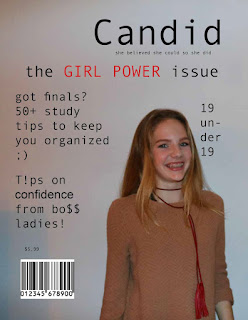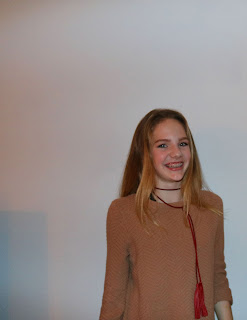1. The man, age 58, Kai Suk Han, was shoved aggressively into the path of a rapidly approaching subway by a panhandler on December 4th, around 12:30 pm. Photographer, R. Umar Ambassi, a freelance New York City photographer claimed he was 'unable to help Han himself,' so he started running and snapping pictures, hoping to warn the conductor with his camera flash.
2. The photographer says he took the pictures to warn the conductor of the subway with his flash, but what conductor stops a subway when they see a camera flash, this is New York City, there are millions of eager tourists who can't help but snap pictures.
3. I personally find it disgusting that the photographer would take the event as an opportunity for a camera opt, instead of making an effort to save his life. But, I do also think that the photographer was not the person who pushed the man onto the tracks, and he didn't intend to do any harm. An effort should have been made to help him, but time moves so quickly, and subways approach extremely fast, not giving him an adequate amount of time to act appropriately.
4. I think the photographer should have at least made an effort to attempt and pull the man up. From the looks of the photograph, he is relatively close to the man with the train still a few seconds away. If needed, he could have tried to grab his arms and pull him up. 5. I think it was important for the New York Post to run the photograph as their cover because it gives the public an opportunity to discuss what are morals are becoming as a country, and give us a way to evaluate and rethink the decisions we make, as well as even the safety precautions of the New York subway system.
6. Stopping bad things from happening is obviously much more important. Humans value human life, and acting in a way that shows no respect or sympathy for those who are about to lose everything is not a sacrifice we can make for a picture.
7. A photographer is a person before they are a photographer, and they have a duty as being a human, to help save lives, more than they have a duty to taking pictures.
8. I would understand the man's explanation better if he hadn't been so close to the man, with a clear second to help him, or if there were other people attempting to pull him out, and he captured the entire scene. But in this situation, he took the few seconds that could have saved that mans life for himself, and he used them for a picture. So, yes, in appropriate settings, it is acceptable for a photographer to involve themselves, if it's not a life or death situation.
9. How does “taking pictures” tell a conductor to stop a train? Huh? Is this photographer guy a moron? Throw down your camera and run to help the guy. If you fail, at least you tried. Taking pictures isn’t trying. What conductor would think, “Oh, look, someone’s taking pictures…maybe I should stop the train.” This is the response that targets the most crucial points of the event, and it shows the behavior of the photographer, and the ways he could have saved his life instead of capturing his death.
Thursday, December 15, 2016
Tuesday, December 13, 2016
Tuesday, December 6, 2016
Thursday, December 1, 2016
Deadlines
Deadlines:
1. the origin is unknown but the earliest recount was in the civil war, and it was used as a line prisoners weren't allowed to cross.
2. Missing a deadline is stressful and frustrating, setting you back and making you have to have more work in the future, because unfortunately just because you need more time doesn't mean anyone will give it to you.
3.Most of the time I'm on top of my work, even if it means coming home from dance at ten at night every night and starting homework then. I do this because I know I have to catch up later and it will just be more work for me then.
4. I usually don't miss deadlines.
5. I just have so much on my plate due to school, dance, and no time for anything. I know that's a stereotypical excuse, but school starts, I go straight to dance, because it starts at 5, eat dinner in the car, and get home at 10, starting homework then, every day Monday-Thursday. Friday-Sunday is reserved for competitions and solo rehearsal, so trying to fit things in can be hard to handle and requires a lot of self discipline.
6. When I'm trying to be productive, I put in my earbuds and play music, put my phone on do not disturb, keep a close eye on the time, and get to work doing everything in order and as efficiently as possible.
1. The tip that would be the most helpful would be to not be afraid of saying no to people. Sometimes I feel like I have 10,000 commitments every day, and not enough time to give my full attention to every event.
2. This would still probably the most difficult tip for me to follow because I never want to miss out on an opportunity to spend time with my friends, or take a really awesome dance opportunity that could further my career.
3. I struggle with waking up and getting out of bed in the morning, but once I'm up it's not an issue, but I wouldn't say I'm a night person either who can stay up until 3 am without being tired, so I would say I'm neither unless something came up where I needed to be.
3A. Usually right after school on my dance, I hit a lull where I just want to lay down and sleep, but by the time I start dancing, my energy picks up and I feel much better.
4. I usually have my dedicated study time from about 10-12 pm when I get home from dance.
5. The time period already eliminates most distractions because most people are asleep or getting ready for bed to go to school the next day.
1. Being able to manage time is extremely important relating to homework. If you get assigned a poster and powerpoint project assigned 2 weeks before the due date, but an English paper one day, a Biology experiment, or a huge Algebra test, it can be hard to push off homework that you have time for against homework due the next day, but if you map out your time it will make your life much easier in the future.
2. At my desk with a candle burning, some comfortable pjs on, and some quiet music playing.
3. I can never work in silence, so I usually have Netflix or Youtube on in the background, and if I'm not 100% focused t can be distracting.
4. Turn them off and try to learn to focus without them. Pick a background noise that doesn't involve so much attention of watching or hearing dialogue, such as music. Instead of doing the two things simultaneously, take breaks to watch or listen and then get back to work with 100% focus and no distractions.
1. the origin is unknown but the earliest recount was in the civil war, and it was used as a line prisoners weren't allowed to cross.
2. Missing a deadline is stressful and frustrating, setting you back and making you have to have more work in the future, because unfortunately just because you need more time doesn't mean anyone will give it to you.
3.Most of the time I'm on top of my work, even if it means coming home from dance at ten at night every night and starting homework then. I do this because I know I have to catch up later and it will just be more work for me then.
4. I usually don't miss deadlines.
5. I just have so much on my plate due to school, dance, and no time for anything. I know that's a stereotypical excuse, but school starts, I go straight to dance, because it starts at 5, eat dinner in the car, and get home at 10, starting homework then, every day Monday-Thursday. Friday-Sunday is reserved for competitions and solo rehearsal, so trying to fit things in can be hard to handle and requires a lot of self discipline.
6. When I'm trying to be productive, I put in my earbuds and play music, put my phone on do not disturb, keep a close eye on the time, and get to work doing everything in order and as efficiently as possible.
1. The tip that would be the most helpful would be to not be afraid of saying no to people. Sometimes I feel like I have 10,000 commitments every day, and not enough time to give my full attention to every event.
2. This would still probably the most difficult tip for me to follow because I never want to miss out on an opportunity to spend time with my friends, or take a really awesome dance opportunity that could further my career.
3. I struggle with waking up and getting out of bed in the morning, but once I'm up it's not an issue, but I wouldn't say I'm a night person either who can stay up until 3 am without being tired, so I would say I'm neither unless something came up where I needed to be.
3A. Usually right after school on my dance, I hit a lull where I just want to lay down and sleep, but by the time I start dancing, my energy picks up and I feel much better.
4. I usually have my dedicated study time from about 10-12 pm when I get home from dance.
5. The time period already eliminates most distractions because most people are asleep or getting ready for bed to go to school the next day.
1. Being able to manage time is extremely important relating to homework. If you get assigned a poster and powerpoint project assigned 2 weeks before the due date, but an English paper one day, a Biology experiment, or a huge Algebra test, it can be hard to push off homework that you have time for against homework due the next day, but if you map out your time it will make your life much easier in the future.
2. At my desk with a candle burning, some comfortable pjs on, and some quiet music playing.
3. I can never work in silence, so I usually have Netflix or Youtube on in the background, and if I'm not 100% focused t can be distracting.
4. Turn them off and try to learn to focus without them. Pick a background noise that doesn't involve so much attention of watching or hearing dialogue, such as music. Instead of doing the two things simultaneously, take breaks to watch or listen and then get back to work with 100% focus and no distractions.
Tuesday, November 29, 2016
100 Most Famous Photos
Starving Child and Vulture
1. I picked this image because at first I mistook the child for a vulture or animal. With his ribs protruding and in a crouched and foetal position, it mirrors the bird behind him.
2. Photographer Kevin Carter has known, seen, and experienced death. While in Africa he discovered a collapsed child who had crumbled in exhaustion on the way to the feeding center. Photographers are supposed to only observe and capture, so instead of helping the boy, he watched and captured as a vulture landed behind him.
3. I was unaware that photographers aren't supposed to touch or help subjects they are photographing in Africa, due to disease, and Carter's interaction spiked an interest and debate in the situations in which photographers should intervene.
4.


5. Kevin Carter
1960-1994
Johannesburg, South Africa
Military
Michael Jordan
1. This image is really interesting to me because of the power it has behind it. The silhouette is really interesting as well.
2. Co Rentmeester is the photographer. This pose became an iconic symbol that was incorporated in rooms, clothing, and shoes all across the nation.
3. Being a teenager, I've heard of Jordan shoes and recognize the symbol, but I didn't know that it was an actual picture of Michael Jordan mid leap.
4.


5. Co Rentmeester
Born in 1936
Amsterdam, Netherlands
Art Center College in Los Angeles
V-J Day in Times Square
1. This is such a famous picture that I've seen multiple times, and I wanted to understand more about the initial event and the man and women in the photograph.
2. Alfred Eisenstaedt was the photographer who captured the picture after World War ll ended and people filled the streets. Alfred caught this moment of joy, playfulness, and the relief of the war being over.
3. I didn't know that the man and women didn't know one another. While the man was coming back from being overseas, the woman, who was just a nurse, had never met him, and he swooped her in for a kiss. Some people of the modern day argue that it could have been sexual assault, while others differ in saying that everyone was happy and it was a carefree, spurr of the moment action.
4.


5. Alfred Eisenstaedt
1898-1995
Tczew, Poland
Humboldt University of Berlin
The Hindenburg Disaster
1. I had never seen this picture before, and with the smoke and fire, it reminded me of the 9/11 pictures we had seen a while back, but obviously on a much smaller scale.
2. Back in 1937, zeppelins were a symbol of power, wealth, and luxury, but as people waited and watched for it to land, it burst into flames, smoke rolling out of every crevice, sparks cracking and raining down, it was a devastation, killing 36 people.
3. Led Zeppelin even used the photograph as their first album cover, justifying it by the statement by Jimmy Page, "Dramatic photo, dramatic music, dramatic statement."
4.


5. Sam Shere
1905-1982
Minsk, Belarus
N/A
Muhammad Ali V.S Sonny Liston
1. I've always loved Muhammad Ali's drive, confidence, talent, and his inspiration he gave to so many people, so when I saw this photograph, I had to discover more about it.
2. Sports Illustrated photographer Neil Leifer captured this picture perfectly, Ali was surrounded by an aura of light and smoke, and he seemed bigger and stronger than life.
3. Ali was almost 10 years younger than Liston, and in this match, he knocked Liston down flat only a minute and 44 seconds in. Although many could call Ali cocky and conceited, he backed up everything he said with hard work and action.
4.


5. Neil Leifer
Born in 1942
New York City, New York
N/A
1. I picked this image because at first I mistook the child for a vulture or animal. With his ribs protruding and in a crouched and foetal position, it mirrors the bird behind him.
2. Photographer Kevin Carter has known, seen, and experienced death. While in Africa he discovered a collapsed child who had crumbled in exhaustion on the way to the feeding center. Photographers are supposed to only observe and capture, so instead of helping the boy, he watched and captured as a vulture landed behind him.
3. I was unaware that photographers aren't supposed to touch or help subjects they are photographing in Africa, due to disease, and Carter's interaction spiked an interest and debate in the situations in which photographers should intervene.
4.


5. Kevin Carter
1960-1994
Johannesburg, South Africa
Military
Michael Jordan
1. This image is really interesting to me because of the power it has behind it. The silhouette is really interesting as well.
2. Co Rentmeester is the photographer. This pose became an iconic symbol that was incorporated in rooms, clothing, and shoes all across the nation.
3. Being a teenager, I've heard of Jordan shoes and recognize the symbol, but I didn't know that it was an actual picture of Michael Jordan mid leap.
4.


5. Co Rentmeester
Born in 1936
Amsterdam, Netherlands
Art Center College in Los Angeles
V-J Day in Times Square
1. This is such a famous picture that I've seen multiple times, and I wanted to understand more about the initial event and the man and women in the photograph.
2. Alfred Eisenstaedt was the photographer who captured the picture after World War ll ended and people filled the streets. Alfred caught this moment of joy, playfulness, and the relief of the war being over.
3. I didn't know that the man and women didn't know one another. While the man was coming back from being overseas, the woman, who was just a nurse, had never met him, and he swooped her in for a kiss. Some people of the modern day argue that it could have been sexual assault, while others differ in saying that everyone was happy and it was a carefree, spurr of the moment action.
4.


5. Alfred Eisenstaedt
1898-1995
Tczew, Poland
Humboldt University of Berlin
The Hindenburg Disaster
1. I had never seen this picture before, and with the smoke and fire, it reminded me of the 9/11 pictures we had seen a while back, but obviously on a much smaller scale.
2. Back in 1937, zeppelins were a symbol of power, wealth, and luxury, but as people waited and watched for it to land, it burst into flames, smoke rolling out of every crevice, sparks cracking and raining down, it was a devastation, killing 36 people.
3. Led Zeppelin even used the photograph as their first album cover, justifying it by the statement by Jimmy Page, "Dramatic photo, dramatic music, dramatic statement."
4.


5. Sam Shere
1905-1982
Minsk, Belarus
N/A
Muhammad Ali V.S Sonny Liston
1. I've always loved Muhammad Ali's drive, confidence, talent, and his inspiration he gave to so many people, so when I saw this photograph, I had to discover more about it.
2. Sports Illustrated photographer Neil Leifer captured this picture perfectly, Ali was surrounded by an aura of light and smoke, and he seemed bigger and stronger than life.
3. Ali was almost 10 years younger than Liston, and in this match, he knocked Liston down flat only a minute and 44 seconds in. Although many could call Ali cocky and conceited, he backed up everything he said with hard work and action.
4.


5. Neil Leifer
Born in 1942
New York City, New York
N/A
Thursday, November 17, 2016
5 Websites
1. Spiral Staircase
I love this picture because the dainty and delicate detailing in the baister of the staircase. The shaping of the staircase and the birds eye view, it plays with your eyes and makes you want to stare at the picture until you can figure it out. I see point of view as a rule of photography, and without this angle, the picture doesn't stand out or draw your eye. Christian Richter took the photograph. When seeing the picture, it makes me wonder where it was taken and what kind of story the building has. My mom's old house has a spiral staircase she always tells me about, and anytime I see one of these elaborate staircases, it always reminds me of her, and the stories she tells.

2. Great Portraits
When looking at portraits, the subject can sometimes seem stiff, too placed, or boring, and after seeing the same poses, props, angles, and facial expressions, it can seem repetitive, dull, and uninteresting. When incorporating props, and facials that are compelling to look at, it draws your eye and makes you think about what message the photographer is trying to convey. In the photograph above the musician is squinting into the guitar as if trying to see what makes the noise. These portraits are very interesting to look at, and each new person who looks at the picture can interpret it differently, and take away something that relates to them.

3. The Oldest Living Things in the World
The pictures I was drawn to most were the artful pictures of trees that were knocked down, or knotted and buckled roots with branches. These pictures really speak to me because they remind me of the bastrop fires. Trees have always been soothing to me because of the strength and power they hold, but also with grace and wisdom. They have been here much longer than us, and when they are disrespected, cut down, or die, it to me symbolizes a sense of cruelty in human nature, because we're destroying something that does nothing but upkeep our lives and our very lifestyle. This website spoke to me the most out of all the websites because I think not only the pictures are beautiful and extremely well lit, but also spread awareness about nature and the affects humans have on the world.

4. Organizing Chaos in Travel Photography
Travel photography is bursting with color, architecture, style, and personality, but it can sometimes be difficult to take a step back and exam your work with a critiquing eye. Organizing your pictures in a format that makes sense and is appealing to the viewer is important. When elements in the picture are battling for attention, the overall image is scattered and lost and you can't see a clear picture or develop a clear understanding. My favorite tip the website gave was to establish who the hero or protagonist of your picture is. Many people forget that just because it's a still picture, doesn't mean that there isn't a beginning, middle, end, and a protagonist and antagonist. Developing the story and lesson of your picture is important to the understanding and overall impact on the viewer.

5. Photos Every Photographer Should Know How to Make
Learning photography is hard because there's such a balance between technique and artistry. These photos can lend helpful inspiration and help you understand what techniques you need to learn to master to stand out from everyone else. My favorite technique used is the forced perspectives technique. So many ideas can be incorporated and at first glance, the picture plays with a viewers head, and it can make you laugh or even attempt the picture yourself. These types of photography are really popular all over social media and Pinterest, and they lend fun and personality to a photographer's pallet.

I love this picture because the dainty and delicate detailing in the baister of the staircase. The shaping of the staircase and the birds eye view, it plays with your eyes and makes you want to stare at the picture until you can figure it out. I see point of view as a rule of photography, and without this angle, the picture doesn't stand out or draw your eye. Christian Richter took the photograph. When seeing the picture, it makes me wonder where it was taken and what kind of story the building has. My mom's old house has a spiral staircase she always tells me about, and anytime I see one of these elaborate staircases, it always reminds me of her, and the stories she tells.

2. Great Portraits
When looking at portraits, the subject can sometimes seem stiff, too placed, or boring, and after seeing the same poses, props, angles, and facial expressions, it can seem repetitive, dull, and uninteresting. When incorporating props, and facials that are compelling to look at, it draws your eye and makes you think about what message the photographer is trying to convey. In the photograph above the musician is squinting into the guitar as if trying to see what makes the noise. These portraits are very interesting to look at, and each new person who looks at the picture can interpret it differently, and take away something that relates to them.

3. The Oldest Living Things in the World
The pictures I was drawn to most were the artful pictures of trees that were knocked down, or knotted and buckled roots with branches. These pictures really speak to me because they remind me of the bastrop fires. Trees have always been soothing to me because of the strength and power they hold, but also with grace and wisdom. They have been here much longer than us, and when they are disrespected, cut down, or die, it to me symbolizes a sense of cruelty in human nature, because we're destroying something that does nothing but upkeep our lives and our very lifestyle. This website spoke to me the most out of all the websites because I think not only the pictures are beautiful and extremely well lit, but also spread awareness about nature and the affects humans have on the world.

4. Organizing Chaos in Travel Photography
Travel photography is bursting with color, architecture, style, and personality, but it can sometimes be difficult to take a step back and exam your work with a critiquing eye. Organizing your pictures in a format that makes sense and is appealing to the viewer is important. When elements in the picture are battling for attention, the overall image is scattered and lost and you can't see a clear picture or develop a clear understanding. My favorite tip the website gave was to establish who the hero or protagonist of your picture is. Many people forget that just because it's a still picture, doesn't mean that there isn't a beginning, middle, end, and a protagonist and antagonist. Developing the story and lesson of your picture is important to the understanding and overall impact on the viewer.

5. Photos Every Photographer Should Know How to Make
Learning photography is hard because there's such a balance between technique and artistry. These photos can lend helpful inspiration and help you understand what techniques you need to learn to master to stand out from everyone else. My favorite technique used is the forced perspectives technique. So many ideas can be incorporated and at first glance, the picture plays with a viewers head, and it can make you laugh or even attempt the picture yourself. These types of photography are really popular all over social media and Pinterest, and they lend fun and personality to a photographer's pallet.

Friday, November 11, 2016
Local Austin Photographer
The local Austin photographer I chose is J. Noel Photography. She stands out to me because she covers a variety of themes of photography. She takes beautiful pictures of families, babies, couples, and weddings, and all are captured with beautiful lighting, and a nature background filled with simplicity, and beauty. Her photographs are always taken from a warm and nurturing point of view that makes it seem as if she is extremely close with the subject, and feels a relation to them.
The pictures never seem too placed, and are never stiff, with the people laughing, their eyes closed, and their hair streaming behind them. there is always movement, whether it's the wind, or the subject is running or spinning. All the photographs have a color that is soft, but not overly saturated, and carry a sweet and angelic vibe that is consistent throughout.
I am drawn to these because they seem so content and happy. They carry the essence of fantasy, almost fairy like. Another thing I love about her and her photography, is how in touch she is with simplicity and the wonder it is just to be alive. A series she has, called natural babyhood, incorporates a neutral palette, with no flashy or elaborate bows, patterns, or onesies, and white sheets, only to focus on the beauty and unexplainable wonder, gift, and blessing, having a child is.

Simplicity would be the rule used here, because the focus is solely on the piercing blue eyes of the baby boy. This photograph is from her natural baby series, which is using a extremely natural and simple background and pallet so that the focus is on the baby. This technique was clearly affective because when looking at the photograph, your eyes go directly to the bright blue eyes of the boy.

The rule being used could be balancing elements, because the tree in the background is balancing with the man and the women. I have been following J. Noel's photography for a while, and the story of this couple is one that is unique and special. When the couple learned that their unborn daughter would only live a few hours, after suffering from severe heart and brain complications, instead of terminating her pregnancy, the couple decided to carry to term, and have the baby, and were able to hold her before she passed away. I think the joy of pregnancy is wonderfully captured in the picture, and tells the story very well.

This picture is a perfect example of balance, as the mom and dad are perfectly centered around the boy. This picture is very cute, and captures the silliness and fun of spending time with your family.

This photograph uses rule of thirds, because the little boy and girl are moved slightly to the left of the center of the photograph.

This picture uses symmetry because in the background the square pillows are stacked evenly, creating an even and eye pleasing shape.
The pictures never seem too placed, and are never stiff, with the people laughing, their eyes closed, and their hair streaming behind them. there is always movement, whether it's the wind, or the subject is running or spinning. All the photographs have a color that is soft, but not overly saturated, and carry a sweet and angelic vibe that is consistent throughout.
I am drawn to these because they seem so content and happy. They carry the essence of fantasy, almost fairy like. Another thing I love about her and her photography, is how in touch she is with simplicity and the wonder it is just to be alive. A series she has, called natural babyhood, incorporates a neutral palette, with no flashy or elaborate bows, patterns, or onesies, and white sheets, only to focus on the beauty and unexplainable wonder, gift, and blessing, having a child is.

Simplicity would be the rule used here, because the focus is solely on the piercing blue eyes of the baby boy. This photograph is from her natural baby series, which is using a extremely natural and simple background and pallet so that the focus is on the baby. This technique was clearly affective because when looking at the photograph, your eyes go directly to the bright blue eyes of the boy.

The rule being used could be balancing elements, because the tree in the background is balancing with the man and the women. I have been following J. Noel's photography for a while, and the story of this couple is one that is unique and special. When the couple learned that their unborn daughter would only live a few hours, after suffering from severe heart and brain complications, instead of terminating her pregnancy, the couple decided to carry to term, and have the baby, and were able to hold her before she passed away. I think the joy of pregnancy is wonderfully captured in the picture, and tells the story very well.

This picture is a perfect example of balance, as the mom and dad are perfectly centered around the boy. This picture is very cute, and captures the silliness and fun of spending time with your family.

This photograph uses rule of thirds, because the little boy and girl are moved slightly to the left of the center of the photograph.

This picture uses symmetry because in the background the square pillows are stacked evenly, creating an even and eye pleasing shape.
Mural Project
The theme of my mural project is Austin, from downtown, to soho, and all the historic and interesting parts of our city that we all know and love, we wanted to showcase why we love our beautiful city so much, and how it's different from any other place in the world. My 9 images focused on the downtown, soco, and trendy portion of Austin, with all the fun artwork, stores, restaurant and the quirks and activities that are Austin.
1. ACL hat
2. Before I Die wall
3. Boots store
4. HEB mural
5. Hey Cupcake
6. Home Slice
7. ILYSM wall
8. Smile wall
9. Telephone Pole
Tuesday, November 8, 2016
Magazines Part ||
Image based magazine covers are based on drawing the consumer in with a glamorous shot of someone the viewer can identify and relate with. A picture of Kendall Jenner would draw in a younger audience, maybe ages 15-25, while a cover of Willie Nelson would draw in an older audience who have knowledge or can relate to the cover. In the earlier days of magazine covers, the only covers available were illustrations. When magazines use illustrations as their covers, it gives the cover a vintage or classic vibe that is interesting to look at. When an illustration is used, it usually makes a reference to something historical, or an impactful event we all identify with. Type based magazine covers draw the reader in with over exaggerated text, large graphics, and big lettering that draws the eye in to read the text. Concept based magazines give the reader an idea what the entire magazine will explain, design, and illustrate for the reader. Whether it's fashion, food, or fall, the consumer understands what the magazine will encompass, and what they can expect from reading it.
Words and pictures on magazine covers need to balance one another out. If you have an extremely bold picture with bold and graphic writing, incorporating as many techniques and tricks as you can possibly cram into the picture, the picture gets lost, and becomes muddy and unorganized, therefore becoming unappealing to the consumer. On the other end, if you have a simple and basic picture with little or no writing or explanation, there is no appeal, and the reader feels no desire to purchase the magazine because there is no visual stimulus to interest them. A cover needs to be interesting but not overwhelming, simple but not boring, and colorful but not obnoxious, and you will have the perfect balance for a great cover photo.
Favorite Cover

This magazine cover is my favorite because of the stand out white that drew my eye. This cover looks pure and clean on a shelf with other cluttered magazines, muddy with words and too much going on. Gwyneth's skin is glowing and clear, and the netting over her face is mysterious and elegant with her blue eyes glowing from behind the veil. Some critiques that would improve the magazine cover even more would be if the exposure of the camera was lowered slightly. The background is white, the veil is white, and Gwyneth is also pale, so the intense exposure and lighting makes the shot bright and stark, and if it were lowered slightly, it wouldn't wash out her face. Having the magazine cover title in a bold black with a thick and elaborate font, wouldn't have been my choice either. The font draws you attention away from her glowy and angelic face, which should be the main focus of the cover. Having a bold black cover title that covers up her hair and parts of the beautifully designed cap/crown could've been better placed under her chin, and completely removed from her face completely. Despite these slight improvements, the shot is beautifully shot with an angelic and timeless vibe that draws the eye and makes you wonder what's in the pages.
Best Covers
1. Formal
2. Casual
3. Environmental
4. Environmental
5.Environmental
6. Formal
7. Environmental
8. Casual
9. Formal
10. Formal
11. Formal
12. Formal
13. Casual
14. Formal
15. Formal
16. Environmental
17. Casual
2. Casual
3. Environmental
4. Environmental
5.Environmental
6. Formal
7. Environmental
8. Casual
9. Formal
10. Formal
11. Formal
12. Formal
13. Casual
14. Formal
15. Formal
16. Environmental
17. Casual
Magazine Tips
1. Bold Color
2. Overwhelm of color, text and pictures
3. Don't judge the cover by what's on the computer
4. Decide what element should be the most dominant
5. Less is more sometimes
Tuesday, November 1, 2016
American Soldier
American Soldier
A. I think the most powerful image is the one of the soldiers stringing up Christmas lights. I guess I never really understood the amount of holidays, moments, and events people in the army don't get to experience. Being able to see them putting up the lights amidst the cots and makeshift holiday decor is really powerful and makes the appreciative that I get to spend the holidays with my family.
B. The images all evolve and change with the positives and negatives of Fisher's story. They make you feel like you're the photographer and you can understand a soldier's journey as best as anyone can without actually being one.
C. The captions are so well done and descriptive that they enhance the picture by making sure that the viewer fully comprehends the picture with some background information. From all the captions being so close the Ian, I feel like I can understand what he's going through.
D. Ian joins the army at the young age of 17, and is sent to train, leaving behind his family, his friends, and his girlfriend. Fisher endures the 'red zone' period of training, filled with extreme training, intense commands, all paired with little to no sleep. Ian goes through a rough patch with drugs, girls, and even gets lowered a rank. Once it's time for his one year deployment to Iraq, Ian feels like he's finally making a positive impact. He fights long and hard, understanding the meaning of war, and the loneliness of deployment. When Ian comes home, he marries his girlfriend Devin, and feels a sense of accomplishment and pride for everything he's overcome.
E. When Ian is the main subject of the picture, the caption is usually written in present tense.
F.
1. The captions are usually about 2-5 sentences.
2. In the first few sentences, it explains the subject and action of the picture.
3. In the second sentences, it provides background information and an explanation for what is happening.
4. If there is a third sentence, it provides why the subject may be doing what it's doing and an emotional connection.
5. Yes, many captions include quotes.
6. Yes, depending on how much explanation the picture needed, the caption could extend up to 5 sentences.
G. Because if the photos are done well enough, they can tell as story on their own through facial expression, body language, lighting, and point of view. So the captions are actually just short explanations, and aren't necessarily needed.
H. A story can help a reader imagine for themselves how situations or subjects react to events.
A. I think the most powerful image is the one of the soldiers stringing up Christmas lights. I guess I never really understood the amount of holidays, moments, and events people in the army don't get to experience. Being able to see them putting up the lights amidst the cots and makeshift holiday decor is really powerful and makes the appreciative that I get to spend the holidays with my family.
B. The images all evolve and change with the positives and negatives of Fisher's story. They make you feel like you're the photographer and you can understand a soldier's journey as best as anyone can without actually being one.
C. The captions are so well done and descriptive that they enhance the picture by making sure that the viewer fully comprehends the picture with some background information. From all the captions being so close the Ian, I feel like I can understand what he's going through.
D. Ian joins the army at the young age of 17, and is sent to train, leaving behind his family, his friends, and his girlfriend. Fisher endures the 'red zone' period of training, filled with extreme training, intense commands, all paired with little to no sleep. Ian goes through a rough patch with drugs, girls, and even gets lowered a rank. Once it's time for his one year deployment to Iraq, Ian feels like he's finally making a positive impact. He fights long and hard, understanding the meaning of war, and the loneliness of deployment. When Ian comes home, he marries his girlfriend Devin, and feels a sense of accomplishment and pride for everything he's overcome.
E. When Ian is the main subject of the picture, the caption is usually written in present tense.
F.
1. The captions are usually about 2-5 sentences.
2. In the first few sentences, it explains the subject and action of the picture.
3. In the second sentences, it provides background information and an explanation for what is happening.
4. If there is a third sentence, it provides why the subject may be doing what it's doing and an emotional connection.
5. Yes, many captions include quotes.
6. Yes, depending on how much explanation the picture needed, the caption could extend up to 5 sentences.
G. Because if the photos are done well enough, they can tell as story on their own through facial expression, body language, lighting, and point of view. So the captions are actually just short explanations, and aren't necessarily needed.
H. A story can help a reader imagine for themselves how situations or subjects react to events.
Friday, October 28, 2016
Portraits and Self Portraits I
3 Best Rules:
1. Take Unfocused Shots
2. Introduce Motion
3. Experiment with Subject Expressions
Environmental Portraits

I think this picture because the frame is filled to the frame, but the focus is still on the subject, the man. You also don't know exactly where he is, so you have to take a moment to look a the picture before you can figure out where and what he is doing.

The picture really drew me in because it made me think about my grandparents. The table is covered in photographs, there's pictures on the walls, the busy wallpaper draws your eye, and it made me think about how all this man and many people want is to be surrounded by family and memories.
Self Portraits

This picture drew my eye because the man is holding his camera to his head like a gun. For the man, this represents the risk and passion the man feels for photography, and the vulnerability it takes to put your heart out there with your work.

I like this picture because of the two tones and layers it has. It gives movement to the picture, but without any blurriness, and there's still a stillness. In one of the overlays, the women is holding herself, showing the message that there's always someone holding on and standing with you, even if it's you.
Casual Portraits

I love this picture because of the lighting, the fact she's in mid laugh, and the picture isn't so perfect and stiff. The subject looks like she's having fun, laughing and letting go, and isn't worried about anything.

This picture makes me laugh because the picture isn't serious. Having the cat adds so much playfulness and makes the picture lighthearted and silly. I think this picture plays with the rule Experiment with Subject's Expression because she looks like she's having so much fun, and the raised eyebrows and smile with teeth adds something new.
When I shoot my Portrait pictures I want to take pictures of people in my life such as my friends and family, when they're doing their normal routines, and things they feel passionate about. I can take pictures of my friends at dance, of my mom and my brother, pictures playing with my dog. I think it would be really interesting and exciting to see people experiencing their everyday life with all the school stress, fun, joy, and emotions that come with life, and try to capture that through the picture. I'll take pictures in a variety of places, but I'm really interested in the photography rules of movement, expression changes, and simple backgrounds so I would make an effort to incorporate those.
1. Take Unfocused Shots
2. Introduce Motion
3. Experiment with Subject Expressions
Environmental Portraits

I think this picture because the frame is filled to the frame, but the focus is still on the subject, the man. You also don't know exactly where he is, so you have to take a moment to look a the picture before you can figure out where and what he is doing.

The picture really drew me in because it made me think about my grandparents. The table is covered in photographs, there's pictures on the walls, the busy wallpaper draws your eye, and it made me think about how all this man and many people want is to be surrounded by family and memories.
Self Portraits

This picture drew my eye because the man is holding his camera to his head like a gun. For the man, this represents the risk and passion the man feels for photography, and the vulnerability it takes to put your heart out there with your work.

I like this picture because of the two tones and layers it has. It gives movement to the picture, but without any blurriness, and there's still a stillness. In one of the overlays, the women is holding herself, showing the message that there's always someone holding on and standing with you, even if it's you.
Casual Portraits

I love this picture because of the lighting, the fact she's in mid laugh, and the picture isn't so perfect and stiff. The subject looks like she's having fun, laughing and letting go, and isn't worried about anything.

This picture makes me laugh because the picture isn't serious. Having the cat adds so much playfulness and makes the picture lighthearted and silly. I think this picture plays with the rule Experiment with Subject's Expression because she looks like she's having so much fun, and the raised eyebrows and smile with teeth adds something new.
When I shoot my Portrait pictures I want to take pictures of people in my life such as my friends and family, when they're doing their normal routines, and things they feel passionate about. I can take pictures of my friends at dance, of my mom and my brother, pictures playing with my dog. I think it would be really interesting and exciting to see people experiencing their everyday life with all the school stress, fun, joy, and emotions that come with life, and try to capture that through the picture. I'll take pictures in a variety of places, but I'm really interested in the photography rules of movement, expression changes, and simple backgrounds so I would make an effort to incorporate those.
Thursday, October 27, 2016
Funny Captions

Fran Sweethill being contained in a restricted area after causing an uproar over the last pair of loafers at Dillards this Sunday morning, October 23rd. She felt the passion to make sure she got them because "They were my size, and were the perfect white!"

Members of Stepping Stone Rehabilitation and Nursing Home, Nancy O'Neill, Hank Dickerson, and Linda Taylor, gather outside the front lobby protesting. Staff say the events that sparked this protest is the lack of bingo chips at this past Senior Mixer, only the protesters can't quite remember what they're protesting!

Earl Smith hits the dance floor enthusiastically at a flash mob with 'Never to Old to Dance,' an organization that helps keep elderly active and having fun through dance, and show choir! This event on October 5th drew a big crowd, and Earl was the center of attention.
Tuesday, October 25, 2016
Rules of Photography II
Subscribe to:
Posts (Atom)


















